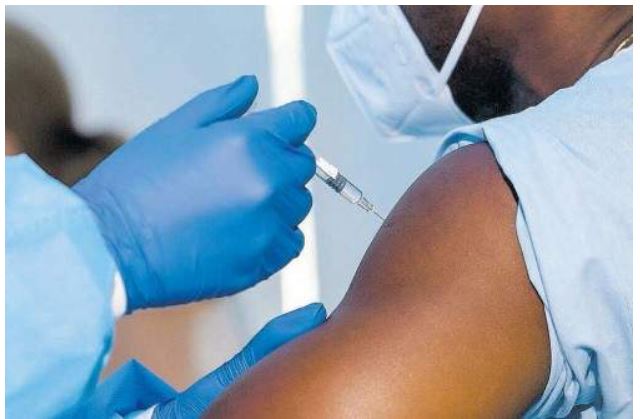By Linda-Gail Bekker
KINGSTON, Jamaica, Dec 01 2016 – To the youth of today, the HIV epidemic is old. It arrived before the Internet, before the Berlin Wall came down, and at a time when you could still smoke on airplanes. It can be difficult to fathom but, unlike those of us from earlier generations, today’s young people have never known a world without AIDS.
Since those frightening early days of the epidemic, when few survived an HIV diagnosis, the introduction of antiretroviral therapy in the mid-1990s dramatically altered our ability to manage HIV infection. After AIDS-related mortality peaked in 2004, AIDS-related deaths have fallen by 42%.
But the medical advances that have transformed HIV treatment have yet to alter the stark reality for young people, particularly in low- to middle-income countries, such as those in sub-Saharan Africa, and young people within key populations. Even as AIDS-related mortality overall decreased in recent years, AIDS-related deaths among adolescents increased by 50%. AIDS, in other words, is far from over, especially for young people. Infection is still a real and continuing threat for them. The world needs to know about the sociocultural factors that influence the spread of HIV and that there are new tools available, such as pre-exposure prophylaxis, or PrEP, to fight the disease. Simultaneously, the world also needs to respond and scale up investment in infrastructure to increase access to the tools we know work.
HIV is the second leading cause of death among adolescents globally and the No. 1 cause of death among adolescents in Africa. Adolescent girls and young women are particularly vulnerable, accounting for a startling 91% of new HIV infections among people aged 15-19 in sub-Saharan Africa, whereas young men in the same age group represent roughly 11%.
The tragic reality is at the threshold of adulthood when they are poised to realize their full human potential, millions of young people worldwide acquire a life-threatening disease.
How is this happening? In high-prevalence settings, many HIV-negative young women — who face limited educational or economic opportunities, exacerbated by gender-based violence –have their earliest sexual relationships with older men. These older men are far more likely than younger men to be living with HIV, as men’s HIV risk steadily increases with age. This pattern is only one of many that increase young people’s risk of acquiring HIV.
Young people at risk of HIV are as diverse as the world itself. No “one size fits all” option exists to protect them from infection. To truly reach adolescents, we do not need one single thick blanket approach pulled over everyone. Rather, we need multiple layers of different interventions that cover different areas and that can be layered thickest where the force of infection is high. This means that prevention programs need to focus their efforts where they will have the greatest impact. Nigeria alone, for example, accounts for more than a quarter of the 150,000 new infections in children last year.
The good news is that the toolkit for HIV prevention has dramatically expanded in recent years. The new kid on the block, PrEP, is set to change the game again. Through PrEP, the same drugs used to treat HIV infection can also sharply reduce the risk of HIV acquisition if taken regularly by HIV-negative individuals. Although PrEP is a potential game-changer for HIV prevention — including for young women, who often lack the means to get their male partners to use a condom — we are only at the very beginning of efforts to make this new tool widely available to the young people who need it. Given the scarcity of youth-friendly clinical services in many parts of the world, innovation, commitment and focused funding will be needed to establish health delivery options that meet young people’s specific needs.
Moreover, biomedical tools such as PrEP, although essential, are unlikely on their own to reverse the epidemic among young people. This is because this population often experiences social and structural factors that increase their risk of acquiring HIV and diminish their ability to access essential services. Addressing these structural factors — for instance, by keeping young people in school — helps ensure that young people are informed and safe.
Keeping young people in school increases HIV prevention, as a young girl’s risk of contracting HIV is halved for every additional year of secondary school that she obtains. The DREAMS project of the United States Emergency Plan for AIDS Relief, as well as youth-oriented national initiatives, such as those in South Africa and Kenya, are working to strengthen HIV prevention by investing in efforts to mitigate the social and structural factors that increase young women’s HIV risks.
These efforts to protect our youth from HIV are personal to me. As a doctor, I have far too often had to tell young people face to face that they have just tested positive for HIV. I’ve seen the profound effect of this news on their lives. As a mother, I understand that supporting, protecting, nurturing and investing in our young people is an investment in our future.
But you don’t need to be a doctor or a mother to recognize the enormous stakes involved in the future of HIV prevention. If we want to avoid repeating history and witnessing yet another generation ravaged by HIV, we urgently need to change the way we do business, boldly access all that we have in the prevention toolbox, and mobilize young people. The next generation will hold us accountable in the future for how we meet the challenge of HIV today. How will we move forward?
Editor’s Note: Dr. Linda-Gail Bekker is president of the International AIDS Society and deputy director of the Desmond Tutu HIV Centre. The views expressed here are her own.




